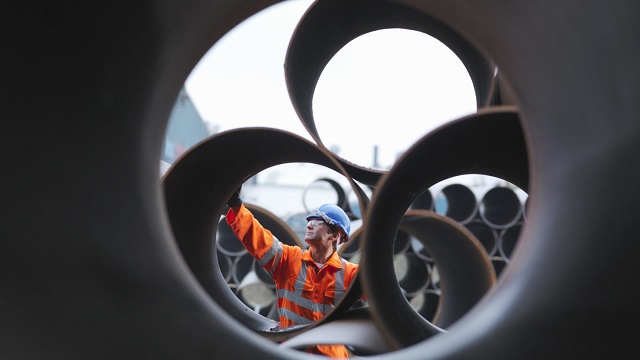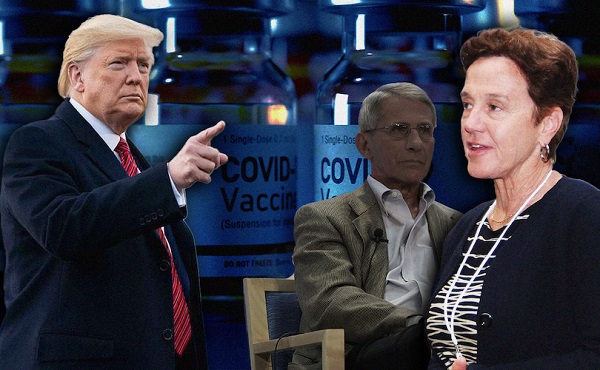Alberta
Oil and gas in the global economy through 2050

From the Canadian Energy Centre
The world will continue to rely on oil and gas for decades to come, according to the International Energy Agency
Recent global conflicts, which have been partly responsible for a global spike in energy prices, have cast their shadow on energy markets around the world. Added to this uncertainty is the ongoing debate among policymakers and public institutions in various jurisdictions about the role of traditional forms of energy in the global economy.
One widely quoted study influencing the debate is the International Energy Agency’s (IEA) World Energy Outlook, the most recent edition of which, World Energy Outlook 2023 (or WEO 2023), was released recently (IEA 2023).
In this CEC Fact Sheet, we examine projections for oil and natural gas production, demand, and investment drawn from the World Energy Outlook 2023 Extended Dataset, using the IEA’s modelled scenario STEPS, or the Stated Policies Scenario. The Extended Dataset provides more detailed data at the global, regional, and country level than that found in the main report.
The IEA’s World Energy Outlook and the various scenarios
Every year the IEA releases its annual energy outlook. The report looks at recent energy supply and demand, and projects the investment outlook for oil and gas over the next three decades. The World Energy Outlook makes use of a scenario approach to examine future energy trends. WEO 2023 models three scenarios: the Net Zero Emissions by 2050 Scenario (NZE), the Announced Pledges Scenario (APS), and the Stated Policies Scenario (STEPS).
STEPS appears to be the most plausible scenario because it is based on the world’s current trajectory, rather than the other scenarios set out in the WEO 2023, including the APS and the NZE. According to the IEA:
The Stated Policies Scenario is based on current policy settings and also considers the implications of industrial policies that support clean energy supply chains as well as measures related to energy and climate. (2023, p. 79; emphasis by author)
and
STEPS looks in detail at what [governments] are actually doing to reach their targets and objectives across the energy economy. Outcomes in the STEPS reflect a detailed sector-by-sector review of the policies and measures that are actually in place or that have been announced; aspirational energy or climate targets are not automatically assumed to be met. (2023, p. 92)
Key results
The key results of STEPS, drawn from the IEA’s Extended Dataset, indicate that the oil and gas industry is not going into decline over the next decade—neither worldwide generally, nor in Canada specifically. In fact, the demand for oil and gas in emerging and developing economies under STEPS will remain robust through 2050.
Oil and natural gas production projections under STEPS
World oil production is projected to increase from 94.8 million barrels per day (mb/d) in 2022 to 97.2 mb/d in 2035, before falling slightly to 94.5 mb/d in 2050 (see Figure 1).

Source: IEA (2023b)
Canadian overall crude oil production is projected to increase from 5.8 mb/d in 2022 to 6.5 mb/d in 2035, before falling to 5.6 mb/d in 2050 (see Figure 2).

Source: IEA (2023b)
Canadian oil sands production is expected to increase from 3.6 mb/d in 2022 to 3.8 mb/d in 2035, and maintain the same production level till 2050 (see Figure 3).

Source: IEA (2023b)
World natural gas production is anticipated to increase from 4,138 billion cubic metres (bcm) in 2022 to 4,173 bcm in 2050 (see Figure 4).

Source: IEA (2023b)
Canadian natural gas production is projected to decrease from 204 bcm in 2022 to 194 bcm in 2050 (see Figure 5).

Source: IEA (2023b)
Oil demand under STEPS
World demand for oil is projected to increase from 96.5 mb/d in 2022 to 97.4 mb/d by 2050 (see Tables 1A and 1B). Demand in Africa for oil is expected to increase from 4.0 mb/d in 2022 to 7.7 mb/d in 2050. Demand for oil in the Asia-Pacific is projected to increase from 32.9 mb/d in 2022 to 35.1 mb/d in 2050. Demand for oil from emerging and developing economies is anticipated to increase from 47.9 mb/d in 2022 to 59.3 mb/d in 2050.

Source: IEA (2023b)

Source: IEA (2023b)
Natural gas demand under STEPS
World demand for natural gas is expected to increase from 4,159 billion cubic metres (bcm) in 2022 to 4,179 bcm in 2050 (see Figures 6 and 7). Demand in Africa for natural gas is projected to increase from 170 bcm in 2020 to 277 bcm in 2050. Demand in the Asia-Pacific for natural gas is anticipated to increase from 900 bcm in 2020 to 1,119 bcm in 2050.

Source: IEA (2023b)

Source: IEA (2023b)
Cumulative oil and gas investment expected to be over $21 trillion
Taking into account projected global demand, between 2023 and 2050 the cumulative global oil and gas investment (upstream, midstream, and downstream) under STEPS is expected to reach nearly U.S.$21.1 trillion (in $2022). Global oil investment alone is expected to be over U.S.$13.1 trillion and natural gas investment is predicted to be over $8.0 trillion (see Figure 8).
Between 2023 and 2050, total oil and gas investment in North America (Canada, the U.S., and Mexico) is expected to be nearly U.S.$5.6 trillion, split between oil at over $3.8 trillion and gas at nearly $1.8 trillion (see Figure 8). Oil and gas investment in the Asia Pacific, over the same period, is estimated at nearly $3.3 trillion, split between oil at over $1.4 trillion and gas at over $1.9 trillion.

Source: IEA (2023b)
Conclusion
The sector-by-sector measures that governments worldwide have put in place and the specific policy initiatives that support clean energy policy, i.e., the Stated Policies Scenario (STEPS), both show oil and gas continuing to play a major role in the global economy through 2050. Key data points on production and demand drawn from the IEA’s WEO 2023 Extended Dataset confirm this trend.
Positioning Canada as a secure and reliable oil and gas supplier can and must be part of the medium- to long-term solution to meeting the oil and gas demands of the U.S., Europe, Asia and other regions as part of a concerted move supporting energy security.
The need for stable energy, which is something that oil and natural gas provide, is critical to a global economy whose population is set to grow by another 2 billion people by 2050. Along with the increasing population comes rising incomes, and with them comes a heightened demand for oil and natural gas, particularly in many emerging and developing economies in Africa, the Asia-Pacific, and Latin America, where countries are seeing urbanization and industrialization grow rapidly.
References (as of February 11, 2024)
International Energy Agency (IEA), 2023(a), World Energy Outlook 2023 <http://tinyurl.com/4nv9xyfj>; International Energy Agency (IEA), 2023(b), World Energy Outlook 2023 Extended Dataset <http://tinyurl.com/3222553b>.
Alberta
Alberta takes big step towards shorter wait times and higher quality health care

From the Fraser Institute
On Monday, the Smith government announced that beginning next year it will change the way it funds surgeries in Alberta. This is a big step towards unlocking the ability of Alberta’s health-care system to provide more, better and faster services for the same or possibly fewer dollars.
To understand the significance of this change, you must understand the consequences of the current (and outdated) approach.
Currently, the Alberta government pays a lump sum of money to hospitals each year. Consequently, hospitals perceive patients as a drain on their budgets. From the hospital’s perspective, there’s little financial incentive to serve more patients, operate more efficiently and provide superior quality services.
Consider what would happen if your local grocery store received a giant bag of money each year to feed people. The number of items would quickly decline to whatever was most convenient for the store to provide. (Have a favourite cereal? Too bad.) Store hours would become less convenient for customers, alongside a general decline in overall service. This type of grocery store, like an Alberta hospital, is actually financially better off (that is, it saves money) if you go elsewhere.
The Smith government plans to flip this entire system on its head, to the benefit of patients and taxpayers. Instead of handing out bags of money each year to providers, the new system—known as “activity-based funding”—will pay health-care providers for each patient they treat, based on the patient’s particular condition and important factors that may add complexity or cost to their care.
This turns patients from a drain on budgets into a source of additional revenue. The result, as has been demonstrated in other universal health-care systems worldwide, is more services delivered using existing health-care infrastructure, lower wait times, improved quality of care, improved access to medical technologies, and less waste.
In other words, Albertans will receive far better value from their health-care system, which is currently among the most expensive in the world. And relief can’t come soon enough—for example, last year in Alberta the median wait time for orthopedic surgeries including hip and knee replacements was 66.8 weeks.
The naysayers argue this approach will undermine the province’s universal system and hurt patients. But by allowing a spectrum of providers to compete for the delivery of quality care, Alberta will follow the lead of other more successful universal health-care systems in countries such as Australia, Germany, the Netherlands and Switzerland and create greater accountability for hospitals and other health-care providers. Taxpayers will get a much better picture of what they’re paying for and how much they pay.
Again, Alberta is not exploring an untested policy. Almost every other developed country with universal health care uses some form of “activity-based funding” for hospital and surgical care. And remember, we already spend more on health care than our counterparts in nearly all of these countries yet endure longer wait times and poorer access to services generally, in part because of how we pay for surgical care.
While the devil is always in the details, and while it’s still possible for the Alberta government to get this wrong, Monday’s announcement is a big step in the right direction. A funding model that puts patients first will get Albertans more of the high-quality health care they already pay for in a timelier fashion. And provide to other provinces an example of bold health-care reform.
Alberta
Alberta’s embrace of activity-based funding is great news for patients

 From the Montreal Economic Institute
From the Montreal Economic Institute
Alberta’s move to fund acute care services through activity-based funding follows best practices internationally, points out an MEI researcher following an announcement made by Premier Danielle Smith earlier today.
“For too long, the way hospitals were funded in Alberta incentivized treating fewer patients, contributing to our long wait times,” explains Krystle Wittevrongel, director of research at the MEI. “International experience has shown that, with the proper funding models in place, health systems become more efficient to the benefit of patients.”
Currently, Alberta’s hospitals are financed under a system called “global budgeting.” This involves allocating a pre-set amount of funding to pay for a specific number of services based on previous years’ budgets.
Under the government’s newly proposed funding system, hospitals receive a fixed payment for each treatment delivered.
An Economic Note published by the MEI last year showed that Quebec’s gradual adoption of activity-based funding led to higher productivity and lower costs in the province’s health system.
Notably, the province observed that the per-procedure cost of MRIs fell by four per cent as the number of procedures performed increased by 22 per cent.
In the radiology and oncology sector, it observed productivity increases of 26 per cent while procedure costs decreased by seven per cent.
“Being able to perform more surgeries, at lower costs, and within shorter timelines is exactly what Alberta’s patients need, and Premier Smith understands that,” continued Mrs. Wittevrongel. “Today’s announcement is a good first step, and we look forward to seeing a successful roll-out once appropriate funding levels per procedure are set.”
The governments expects to roll-out this new funding model for select procedures starting in 2026.
* * *
The MEI is an independent public policy think tank with offices in Montreal, Ottawa, and Calgary. Through its publications, media appearances, and advisory services to policymakers, the MEI stimulates public policy debate and reforms based on sound economics and entrepreneurship.
-

 conflict1 day ago
conflict1 day agoZelensky Alleges Chinese Nationals Fighting for Russia, Calls for Global Response
-

 2025 Federal Election1 day ago
2025 Federal Election1 day agoHarper Endorses Poilievre at Historic Edmonton Rally: “This Crisis Was Made in Canada”
-

 Bruce Dowbiggin2 days ago
Bruce Dowbiggin2 days agoBettman Gives Rogers Keys To The Empire. Nothing Will Change
-

 2025 Federal Election2 days ago
2025 Federal Election2 days agoPoilievre Will Bring in ‘One and Done’ Resource Approvals, and Ten Specific Projects Including LNG Canada Phase II
-

 2025 Federal Election2 days ago
2025 Federal Election2 days agoElection Security Briefing Confirms CCP-Linked Operation Boosted Carney
-

 2025 Federal Election1 day ago
2025 Federal Election1 day agoAn In-Depth Campaign Trail “Interview” With Pierre Poilievre
-

 Alberta16 hours ago
Alberta16 hours agoAlberta’s embrace of activity-based funding is great news for patients
-

 John Stossel16 hours ago
John Stossel16 hours agoGovernment Gambling Hypocrisy: Bad Odds and No Competition










